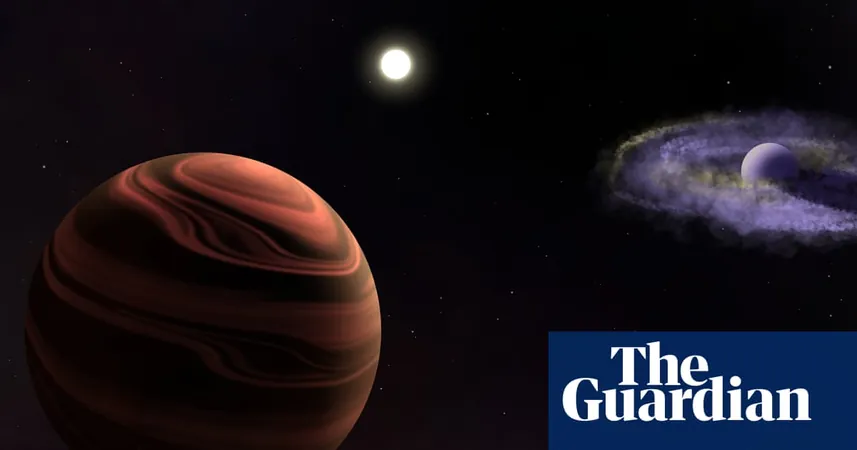
Mysterious High-Altitude Clouds Discovered on Young Exoplanet: What's Going On?
2025-06-10
Author: Wai
Astronomers have stumbled upon a perplexing phenomenon in a distant star system, revealing thick, high-altitude clouds that could significantly shape our understanding of how planets form in the universe.
Nestled in the constellation Ara and located 307 light years away, the star YSES-1 is a cosmic rookie at just one million years old, a mere infant compared to our 4.6 billion-year-old Sun. The young star is surrounded by two gas giants, both larger than Jupiter and still in the tumultuous stages of formation.
Using the advanced James Webb Space Telescope (JWST), scientists detected intriguing thick clouds primarily composed of mineral dust—and possibly iron—hovering in the atmosphere of these young worlds. When these clouds eventually break, they could unleash iron rain onto the surface below!
Dr. Kielan Hoch from the Space Telescope Science Institute emphasized the significance of studying this young planetary system. She stated, 'Few multiplanet systems have been directly imaged, making them unique laboratories for testing planet formation theories in a shared environment.'
To their surprise, the research team was able to gather information on two planets simultaneously, with YSES-1c being the smaller of the duo at six times Jupiter's mass. The JWST data revealed that this gas giant's atmosphere contains fascinating clouds of magnesium silicate dust—distinctively different from Earth’s water vapor—further solidifying the uniqueness of these celestial bodies.
This groundbreaking observation marks the first direct detection of such clouds on a planet orbiting a sun-like star. Researchers also discovered a vast disc of material—trillions of tons of dust particles—surrounding the larger inner planet, YSES-1b, which boasts an impressive mass of 14 Jupiter masses.
Yet, this discovery comes with its conundrums. Why does YSES-1b maintain a material disc while its companion YSES-1c does not? And what explains the persistence of a swirling dust disc around a planet as old as 16 million years—a time when astronomers expected that such material would have already settled? Hoch expressed her curiosity, stating, 'We wouldn’t expect these planets to appear so different if they formed under the same conditions.'
The exploration of YSES-1 is just beginning, and with JWST providing a treasure trove of data, our understanding of planetary formation is poised for a significant transformation.



 Brasil (PT)
Brasil (PT)
 Canada (EN)
Canada (EN)
 Chile (ES)
Chile (ES)
 Česko (CS)
Česko (CS)
 대한민국 (KO)
대한민국 (KO)
 España (ES)
España (ES)
 France (FR)
France (FR)
 Hong Kong (EN)
Hong Kong (EN)
 Italia (IT)
Italia (IT)
 日本 (JA)
日本 (JA)
 Magyarország (HU)
Magyarország (HU)
 Norge (NO)
Norge (NO)
 Polska (PL)
Polska (PL)
 Schweiz (DE)
Schweiz (DE)
 Singapore (EN)
Singapore (EN)
 Sverige (SV)
Sverige (SV)
 Suomi (FI)
Suomi (FI)
 Türkiye (TR)
Türkiye (TR)
 الإمارات العربية المتحدة (AR)
الإمارات العربية المتحدة (AR)